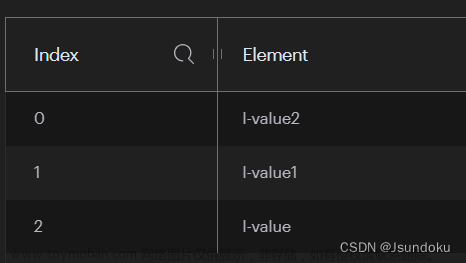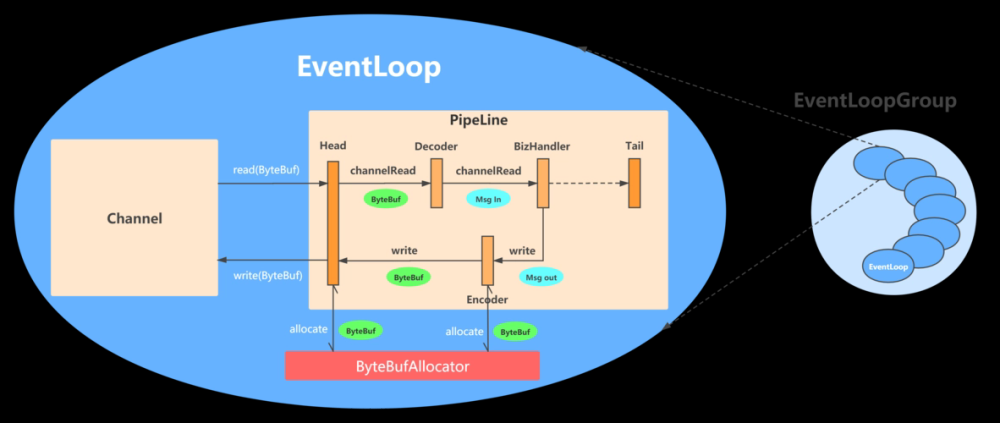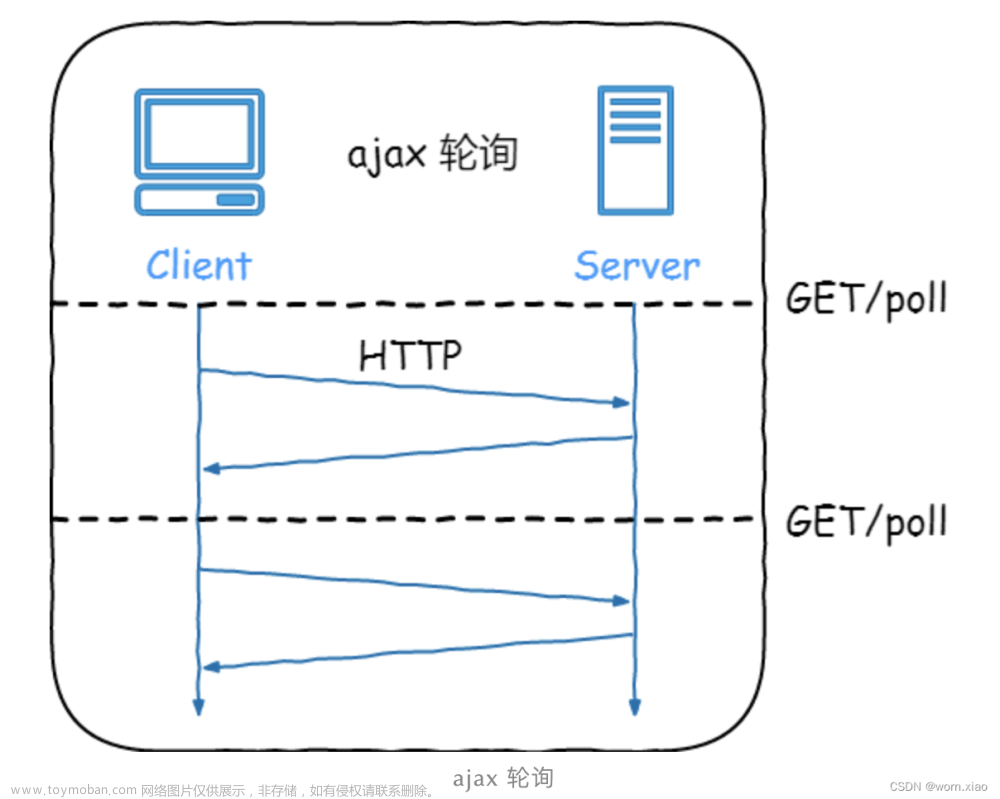当涉及到在客户端/服务器应用程序中使用Netty进行通信时,以下是一个结合Spring Boot的示例教程,演示如何使用Netty构建客户端和服务器应用程序。
简介
本教程将指导您如何使用Netty结合Spring Boot构建客户端和服务器应用程序。通过Netty的可靠网络通信功能,您可以轻松构建高性能的客户端/服务器应用程序。
前提条件
在开始本教程之前,确保您满足以下前提条件:
已经熟悉Java、Netty和Spring Boot的基本概念。
已经安装并配置好Java开发环境。
已经创建了一个Spring Boot项目,可以使用Maven或Gradle构建工具。
步骤
下面是使用Netty结合Spring Boot构建客户端/服务器通信的步骤:
步骤1:设置项目依赖
在您的Spring Boot项目的构建文件(pom.xml或build.gradle)中添加以下Netty和Spring Boot依赖项:
Maven依赖项:
<dependencies>
<!-- Netty -->
<dependency>
<groupId>io.netty</groupId>
<artifactId>netty-all</artifactId>
<version>4.1.65.Final</version>
</dependency>
<!-- Spring Boot Web -->
<dependency>
<groupId>org.springframework.boot</groupId>
<artifactId>spring-boot-starter-web</artifactId>
</dependency>
</dependencies>
Gradle依赖项:
dependencies {
// Netty
implementation 'io.netty:netty-all:4.1.65.Final'
// Spring Boot Web
implementation 'org.springframework.boot:spring-boot-starter-web'
}
步骤2:创建服务器
在您的Spring Boot项目中创建一个Netty服务器类。以下是一个简单的示例:
import io.netty.bootstrap.ServerBootstrap;
import io.netty.channel.*;
import io.netty.channel.nio.NioEventLoopGroup;
import io.netty.channel.socket.nio.NioServerSocketChannel;
import org.springframework.beans.factory.annotation.Value;
import org.springframework.stereotype.Component;
import javax.annotation.PostConstruct;
import javax.annotation.PreDestroy;
@Component
public class MyServer {
@Value("${server.port}")
private int port;
private EventLoopGroup bossGroup;
private EventLoopGroup workerGroup;
private Channel channel;
@PostConstruct
public void start() throws Exception {
// 创建主线程组和工作线程组
bossGroup = new NioEventLoopGroup();
workerGroup = new NioEventLoopGroup();
// 创建服务器引导对象
ServerBootstrap bootstrap = new ServerBootstrap();
bootstrap.group(bossGroup, workerGroup)
.channel(NioServerSocketChannel.class)
.childHandler(new ChannelInitializer<Channel>() {
@Override
protected void initChannel(Channel ch) throws Exception {
// 在管道中添加自定义的服务器处理程序
ch.pipeline().addLast(new MyServerHandler());
}
})
.option(ChannelOption.SO_BACKLOG, 128)
.childOption(ChannelOption.SO_KEEPALIVE, true);
// 绑定端口并启动服务器
ChannelFuture future = bootstrap.bind(port).sync();
channel = future.channel();
}
@PreDestroy
public void stop() throws Exception {
// 关闭服务器通道和线程组
channel.close();
bossGroup.shutdownGracefully();
workerGroup.shutdownGracefully();
}
}
下面是一个示例的MyServerHandler使用案例,它用于处理服务器端的请求和响应:
import io.netty.channel.ChannelHandlerContext;
import io.netty.channel.ChannelInboundHandlerAdapter;
public class MyServerHandler extends ChannelInboundHandlerAdapter {
@Override
public void channelRead(ChannelHandlerContext ctx, Object msg) throws Exception {
// 处理接收到的客户端消息
String request = (String) msg;
System.out.println("Received message from client: " + request);
// 构造响应消息
String response = "Hello, Client!";
ctx.writeAndFlush(response);
}
@Override
public void exceptionCaught(ChannelHandlerContext ctx, Throwable cause) throws Exception {
// 处理异常情况
cause.printStackTrace();
ctx.close();
}
}
在MyServerHandler中,我们重写了channelRead方法来处理接收到的客户端消息,并构造了一个简单的响应消息。在exceptionCaught方法中,我们处理了异常情况,并关闭了与客户端的连接。
步骤3:创建客户端
在您的Spring Boot项目中创建一个Netty客户端类。以下是一个简单的示例:
import io.netty.bootstrap.Bootstrap;
import io.netty.channel.*;
import io.netty.channel.nio.NioEventLoopGroup;
import io.netty.channel.socket.nio.NioSocketChannel;
import org.springframework.beans.factory.annotation.Value;
import org.springframework.stereotype.Component;
import javax.annotation.PostConstruct;
import javax.annotation.PreDestroy;
@Component
public class MyClient {
@Value("${server.host}")
private String host;
@Value("${server.port}")
private int port;
private EventLoopGroup workerGroup;
private Channel channel;
@PostConstruct
public void start() throws Exception {
// 创建工作线程组
workerGroup = new NioEventLoopGroup();
// 创建客户端引导对象
Bootstrap bootstrap = new Bootstrap();
bootstrap.group(workerGroup)
.channel(NioSocketChannel.class)
.handler(new ChannelInitializer<Channel>() {
@Override
protected void initChannel(Channel ch) throws Exception {
// 在管道中添加自定义的客户端处理程序
ch.pipeline().addLast(new MyClientHandler());
}
});
// 连接服务器
ChannelFuture future = bootstrap.connect(host, port).sync();
channel = future.channel();
}
@PreDestroy
public void stop() throws Exception {
// 关闭客户端通道和线程组
channel.close();
workerGroup.shutdownGracefully();
}
}
下面是一个示例的MyClientHandler使用案例,它用于处理客户端的请求和响应:
import io.netty.channel.ChannelHandlerContext;
import io.netty.channel.ChannelInboundHandlerAdapter;
public class MyClientHandler extends ChannelInboundHandlerAdapter {
@Override
public void channelActive(ChannelHandlerContext ctx) throws Exception {
// 在客户端连接建立时发送请求消息
String request = "Hello, Server!";
ctx.writeAndFlush(request);
}
@Override
public void channelRead(ChannelHandlerContext ctx, Object msg) throws Exception {
// 处理接收到的服务器响应消息
String response = (String) msg;
System.out.println("Received message from server: " + response);
}
@Override
public void exceptionCaught(ChannelHandlerContext ctx, Throwable cause) throws Exception {
// 处理异常情况
cause.printStackTrace();
ctx.close();
}
}
在MyClientHandler中,我们重写了channelActive方法,在客户端连接建立时发送请求消息。在channelRead方法中,我们处理接收到的服务器响应消息。在exceptionCaught方法中,我们处理了异常情况,并关闭了与服务器的连接。
步骤4:配置服务器和客户端
在application.properties或application.yml配置文件中,指定服务器和客户端的端口号和主机名。例如:
application.properties:
server.port=8080
server.host=localhost
application.yml:
server:
port: 8080
host: localhost
步骤5:运行服务器和客户端
编译并运行您的Spring Boot应用程序。服务器将在指定的端口上启动并开始监听连接。客户端将连接到服务器并发送请求。文章来源:https://www.toymoban.com/news/detail-552776.html
通过结合Spring Boot和Netty,您可以轻松构建可靠的客户端/服务器通信应用程序。您可以根据实际需求自定义MyServerHandler和MyClientHandler的逻辑,并添加更多的处理程序和逻辑。文章来源地址https://www.toymoban.com/news/detail-552776.html
到了这里,关于Netty示例教程:结合Spring Boot构建客户端/服务器通信的文章就介绍完了。如果您还想了解更多内容,请在右上角搜索TOY模板网以前的文章或继续浏览下面的相关文章,希望大家以后多多支持TOY模板网!










